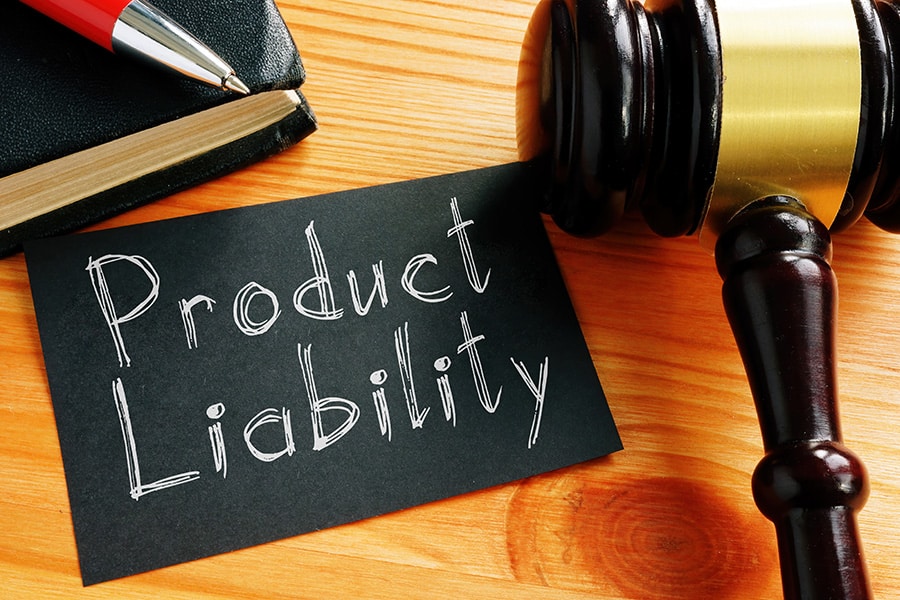What is a product liability lawsuit?
A product liability lawsuit is the legal action taken against a corporation or manufacturer after a product cause you harm. There are several product defects and legal considerations involved in product liability lawsuits.
Navigating the process for a lawsuit can get complicated. If you think you have a case for a product liability lawsuit, you’ll want to consult a legal expert.
To help you identify when you might have cause for a lawsuit, we’ve broken down the ins and outs of product liability. Read on to learn what constitutes a defective product and what you need for a successful product liability lawsuit.
Understanding Liability for a Defective Product
There is culpability involved when a product causes harm to the consumer. When this happens, there are a variety of parties who could be held liable.
This could include distributors, manufacturers, designers, and more. Knowing who should be held responsible for the defective product depends on the defect and the liability claim.
Common Defects Leading to Liability
Most often, product liability falls within the three most common types of defects. These are design defects, manufacturing defects, and marketing defects. The type of defect determines the type of product liability case.
Types of Product Liability Cases
Dangerous by Design
If there is a defect in the design, an intended aspect of the product itself causes harm. An example of a design defect could be an unsafe children’s toy.
Dangerous by Composition
Another common type of product defect is a manufacturing defect. These types of problems occur during the construction stage of product development. In these cases, something that happened during the product’s manufacturing made it unsafe to use.
Dangerous Due to Marketing
A marketing defect occurs when there is a failure to appropriately warn consumers of the potential harm. For example, failure to provide a warning that a toy can be a choking hazard could be a marketing defect.
Legal Elements of Product Liability Claims
There are several legal arguments for a liability claim. To prove your case, you’ll need to prove that one of the following situations occurred and resulted in your injury.
Negligence
Negligence occurs when the responsible party acts carelessly or recklessly when developing, manufacturing, distributing, or marketing a product. If the party in question did not meet appropriate safety standards or take appropriate safety precautions, they might be negligent.
Strict Liability
State liability statutes determine how much warning companies need to provide to consumers about the potential risk of harm. If the warning was too small, obscure, or otherwise difficult to read, the warning may not meet the state’s strict liability standards.
Breach of Warranty
If a product does not function the way the warranty states that it will, there may be a breach of warranty. A warranty can be considered a number of things. It can include advertising of the product, paperwork associated with the product, verbal promises made by sellers, and more.
Legal Basis for Product Liability Law
Tort Law
Tort law is a type of law that enables injured persons to seek some form of compensation for their injuries. This can mean suspending the sale of a product or seeking monetary compensation. Monetary compensation can be made on several grounds, including on behalf of lost income, medical expenses, and emotional distress.
Contract Law
Most state laws have some form of protection regulating product sales and transactions. Your state may define what rights exist in buyer-seller relationships.
State Product Liability Statutes
Some states may also have legislation regarding product liability. Consult with a lawyer to determine how your state’s statutes on product liability will impact your case.
Federal Law
There is no federal law regarding product liability. Although federal guidelines for how to address legislation for product liability exist, there is no federal law regarding this subject. The legal ramifications for a product liability lawsuit will depend on the state law.
Legal Components of a Product Liability Lawsuit
All cases claiming harm or injury as a result of a product must prove three elements:
- a product was involved
- the product was defective
- the product caused harm
Define Product
The first step in a successful product liability lawsuit is to demonstrate that the item in question is a product.
Definitions of products typically involve a physical product, but there are other uses of the term. Electronically transferred items may be considered a product. So can intellectual property, animals, real estate, and written works.
Product Defect
To win your case, you’ll also need to prove that the product was in some way defective. A defect is considered an attribute that makes the product unsafe.
The defect can be a part of the product itself, part of the packaging, the manufacturing, its labeling, product display, or advertising. The most common types of defects are design defects, manufacturing defects, and marketing defects.
Causation
The final aspect of a product liability case is proving that the product default caused you harm or injury. During this aspect of the case, you should present medical records, witnesses, and other forms of proof that will demonstrate how the product caused you harm. Your legal team should help you gather the evidence you need to support your claims.
Need a Defective Products Lawyer in your Area?
Still have questions? We have experts around the clock to address your questions about what is a product liability lawsuit and defective products.
Think you might have a product liability case? If you intend to file a product liability claim, you’ll need a defective product liability lawyer. Give us a call at 800-874-3528 to schedule a free consultation.
